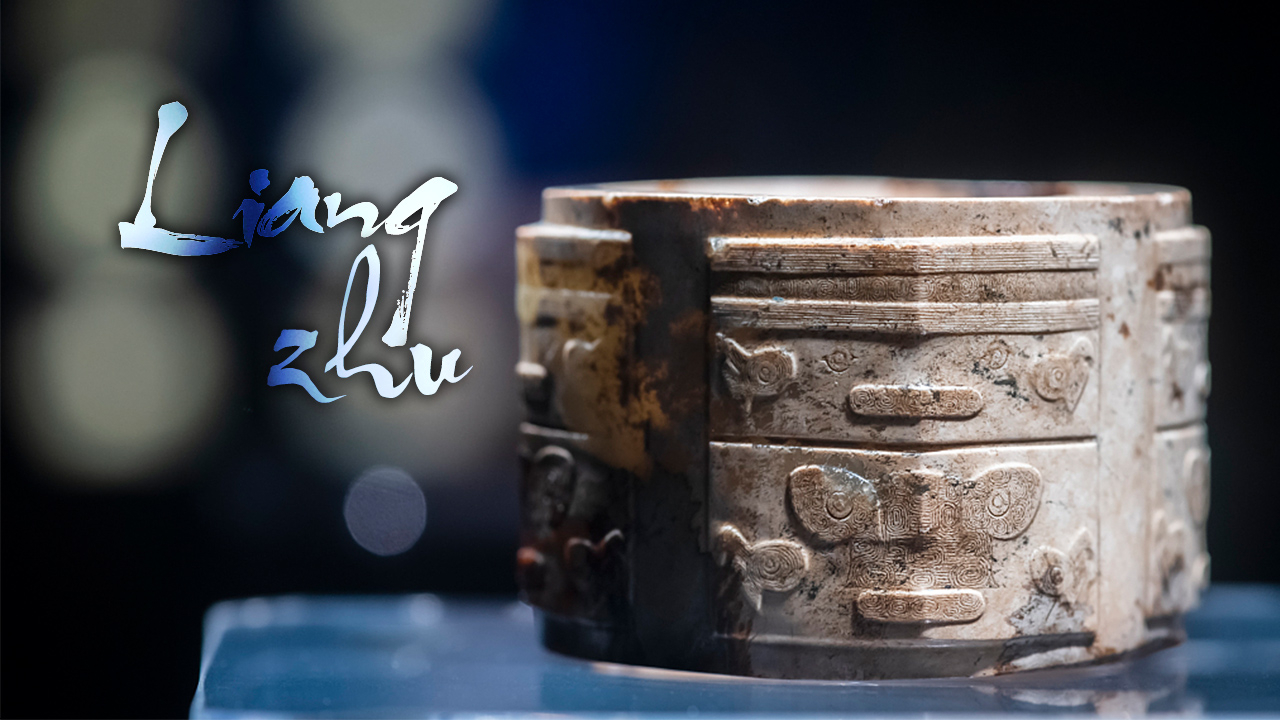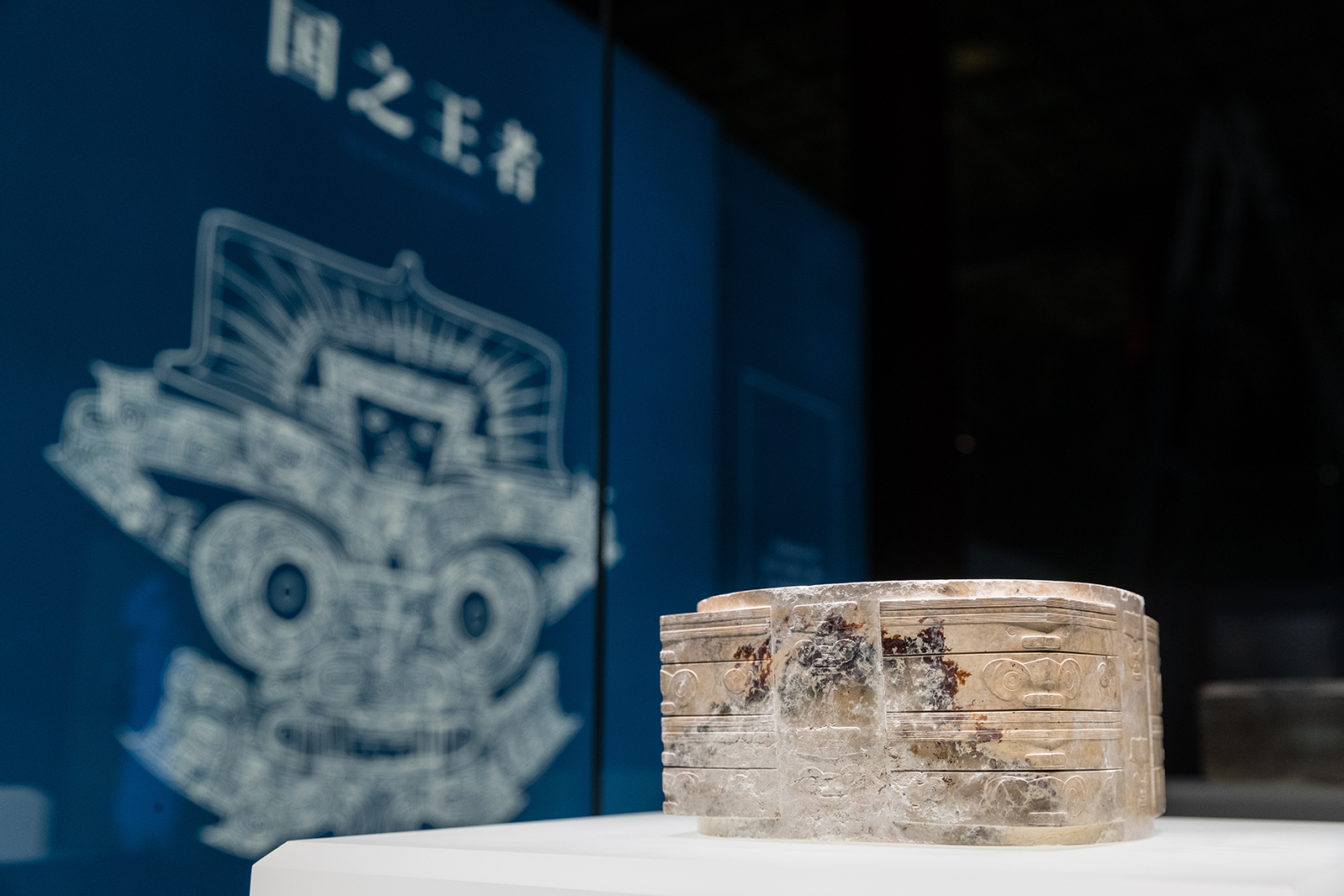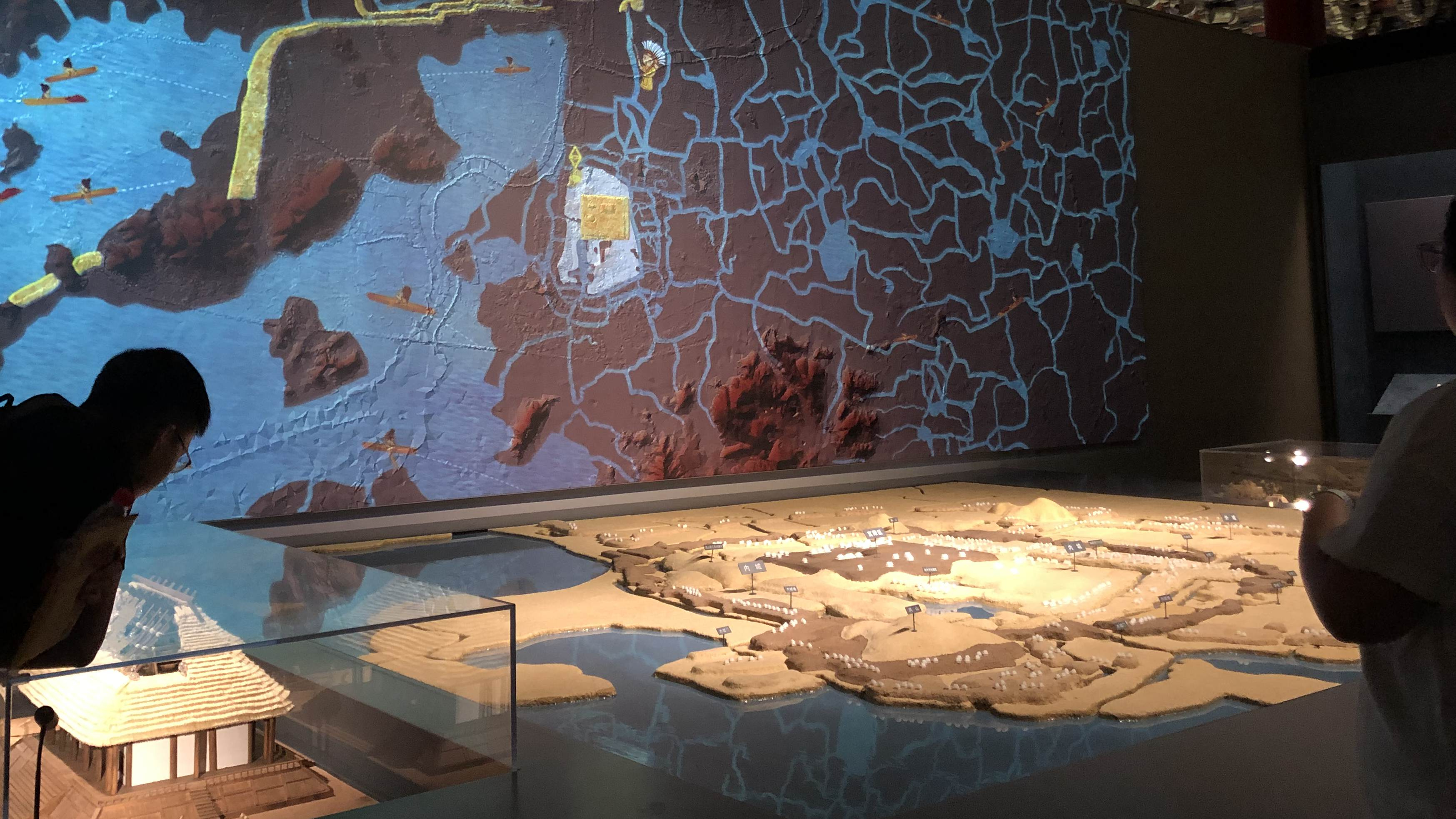

On July 16, 2019, the exhibition "Liangzhu and Ancient China - the 5,000-year Civilization Demonstrated by Jades" opened in the Hall of Martial Valor of the Palace Museum in Beijing. The exhibition has gathered 260 pieces of treasure from 17 cultural institutions in nine provinces and cities across the country. It is the first grand appearance of the Archaeological Ruins of Liangzhu City after its successful inscription on UNESCO's World Heritage List.
The story of the exhibition
The ruins of what was once the thriving capital of Liangzhu were included on the World Heritage List at the 43rd session of the UNESCO World Heritage Committee in Azerbaijan, and it thus became China's 55th world heritage site.
The exhibition spans 5,000 years from the Liangzhu period of the Neolithic to the Ming and Qing dynasties (1368-1912). Through the four parts, the exhibition comprehensively and systematically reflects the early characteristics of Liangzhu civilization and its influence on later cultures, and scientifically interprets the critical contribution and unique role of Liangzhu civilization in constructing the Chinese civilization.

The Liangzhu "Jade Cong King," jade tubes with quadrilateral exteriors in the Liangzhu exhibition that opens in Palace Museum in Beijing, China, July 16, 2019. /Photo: Courtesy of the Palace Museum
Liangzhu culture is one of the most splendid cultural treasures of the Chinese prehistoric period. The excavated objects represented by jade are essential elements contributing to the heritage value of the Langzhu archaeological site. The tomb of the king and queen of Liangzhu, the main attraction of the exhibition, also features 119 pieces of jade on display in the Palace Museum, such as jade cong (jade tubes with quadrilateral exteriors), bi (jade disks), and yue (jade axes).
For the exhibition, the Palace Museum also came up with 34 pieces of exquisite cultural relics, most of which are Liangzhu jade objects collected by the Emperor Qianlong (1735-1796).
At the same time, the east and west wing halls of the Hall of Martial Valor exhibit the archaeological research and preservation of the Liangzhu archaeological site, allowing the audience to get closer to the early Chinese civilization 5,000 years ago, and get a sense of the immense efforts behind prehistorical protection and research work.
The start of civilizations
The exhibition site restored Liangzhu ancient city in the form of a sand model. According to Gao Menghe, professor of the Department of Cultural Heritage and Museology at Fudan University, the core of Liangzhu ancient city is the palace area, followed by the inner and outer cities. The triple wall reflects the earliest way of constructing the ancient Chinese city.
Liangzhu is a sacred place that showcases the 5,000 years-long history of Chinese civilizations, as the exhibition introduced. It demonstrated an early-stage form with rice cultivation as its economic support, with social differentiation and a unified belief system.

A sand model of the ancient Liangzhu city in the exhibition on July 16, 2019. /CGTN Photo
Protection and utilization
Besides representative exhibits, the east and west halls inside the Hall of Martial Valor also highlight the years of research and efforts relevant departments put into the protection of the cultural site.
Since the discovery of the Liangzhu site, significant achievements have been reached in archaeological development and academic research. Moreover, a way of protection, management, utilization, and inheritance with characteristics of the Liangzhu times has been gradually explored, which provides a reference for the protection and utilization of archaeological sites in China.

A series "Jade Bi (jade disks)" of the Liangzhu site in the exhibition at the Palace Museum on July 16, 2019. /VCG Photo
For more than half a century, the protection and management of the Liangzhu site have strictly abided domestic and foreign charters, conventions, and regulations concerning cultural heritage protection, relevant certifications displayed in the exhibition show.
Wang Xudong, director of the Palace Museum, said at the opening ceremony of the exhibition that Liangzhu’s inscription on the World Heritage List had received considerable attention. The display of Liangzhu and ancient China in the Palace Museum is a time and space exchange and dialogue between two world cultural heritage sites, he added.

Scientific detection was used in the protection of the Liangzhu site. /CGTN Photo
"The Palace Museum has long closely followed the Liangzhu site, and there are also Liangzhu jades among the cultural relics at the Palace Museum. Our highest-level academic leaders and experts all devoted themselves to the process of this important cultural event," Wang said.
The exhibition runs until October 20, 2019.
(Cover image made by Yin Yating)

Copyright © 2018 CGTN. Beijing ICP prepared NO.16065310-3
Copyright © 2018 CGTN. Beijing ICP prepared NO.16065310-3